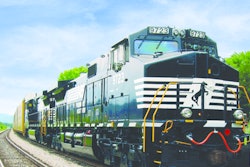
The Biden-Harris Administration announced a $66 billion investment in the Hudson River Tunnel project, which will construct a critical new rail tunnel between New York and New Jersey along a vital economic corridor. Said to be one of the largest infrastructure projects in U.S. history, the project will provide four modern rail tunnels for Amtrak and NJ Transit trains and provide the capability to significantly expand capacity in the future. The new tunnel and the rehabilitated tunnel are estimated to open by 2038.
“For decades, Americans watched one of the most heavily-used train tunnels in the hemisphere deteriorate and become a bottleneck that affected travelers from New England to the Mid-Atlantic and beyond,” says U.S. Transportation Secretary Pete Buttigieg. “Today, President Biden is making good on his promise to fix that and build the Hudson Tunnel Project. Using funds from the President's infrastructure law, we are building a new tunnel that improves train travel for millions of Americans and revitalizes a rail corridor that is essential to so much of the nation's economy. And as one of the cathedrals of American infrastructure, this project can demonstrate America's capacity to build big things together in the 21st century.”
“Today, the Biden-Harris Administration and USDOT are delivering on a promise to the riders of New York, New Jersey, and along the entire Northeast Corridor to invest $11.7 billion in the Gateway Project, and an additional $4.1 billion in federal loans,” says U.S. Deputy Transportation Secretary Polly Trottenberg. “Today represents a major milestone in a years-long effort to build a new Hudson River crossing that has included USDOT, Congress, two states, Amtrak, the Port Authority, local officials, labor partners, and more. Together we are investing in a project that will continue to move Americans forward and contribute to the economic vitality of the nation.”
Key takeaways:
- The Hudson Tunnel Project encompasses a range of components, including a new double-track tunnel between the Bergen Palisades in New Jersey and Manhattan in New York City, rehabilitating the North River Tunnel damaged by Superstorm Sandy in 2012, and creating a concrete casing at Hudson Yards to allow the new tunnel to connect to New York-Penn Station. These elements will collectively enhance service, improve reliability, modernize design, and mitigate the impact of future natural disasters, ensuring a seamless rail network.
- Additional project benefits include building resiliency and safeguarding rail operations against future extreme weather events, managing floods on both sides of the Hudson River, and creating a safer environment for first responders, maintenance workers, and the public, especially in the event of an evacuation.
- According to Amtrak, the high level of traffic in the existing North River Tunnel — approximately 450 trains per weekday — means that without this project, taking one of the North River Tunnel tubes out of service for necessary repairs would severely reduce rail service because the remaining tube would have to accommodate two-way traffic.
“It is important to realize that as we improve New Jersey Transit and Amtrak service in and out of Manhattan, we will improve train and transit service for a region that impacts more than 20% of the nation’s economy,” says Federal Transit Administration (FTA) acting administrator Veronica Vanterpool. “FTA is proud to invest in the Hudson Tunnel project so these rails can continue to carry millions of people who keep the American economy humming.”
“Today’s announcement is a testament to the remarkable progress we can achieve when we work together,” says bureau executive director Morteza Farajian. “The true partnership between both states, the Gateway Development Commission, Port Authority, New Jersey Transit, Amtrak, and various agencies within the federal government secured the last piece of the funding and finance puzzle necessary to deliver this mega project that will serve the region and the nation for generations to come.”




















